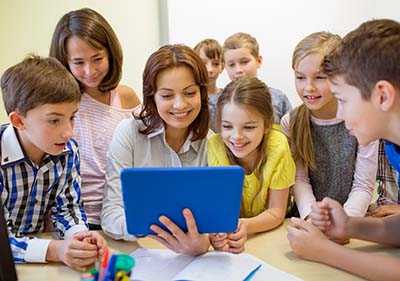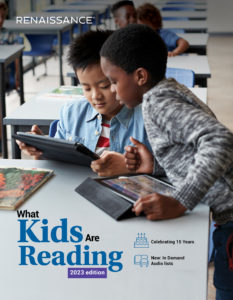Collaborative Learning
Edwords (ěd · words) n. 1. PreK-12 glossary breaking through buzzwords to solve the challenge of a common definition. 2. Renaissance® resource to help educators take part in discussion, debate, and meaningful discourse. 3. Educators’ jargon buster.
Related Product
What is collaborative learning?
Collaborative learning unites students and teachers in an environment where they work together to solve a problem, complete a task, or design a solution. Students bring their own unique skills and perspectives to the task at hand, which supports more equitable engagement where each learner is represented in the solution.
When students work collaboratively, they prepare themselves for challenges they may encounter in college and career, where they too will be represented in ideas and solutions we have yet to imagine.

Your classroom: A symbiotic ecosystem
To be a successful person, students must learn things that aren’t taught in textbooks: compassion, determination, leadership, and communication, to name a few. Collaboration provides a natural platform for you to encourage that development.
You also get the opportunity to observe students’ thought process. It’s another way of checking in to see if they’ve achieved deep understanding while you’re enriching their learning environment.
Why choose collaborative learning?
Renaissance programs provide authentic opportunities for fostering meaningful conversation during reading and math practice.
Celebrate societal connection
Students need to read nonfiction in order to explore the connection they have to other people who made an impact on their world. Find ways to practice together in this free eBook:
Practice critical thinking
One of the hot topics at NCTM 2016 was encouraging meaningful discourse as a key component of math practice. Use resources built for math practice to create an intuitive flow of student discussions during math. See them in action and learn real classroom strategies to get kids talking about math:
Working together helps you
- Encourage students to take ownership of their own learning
- Create a rich environment where each child feels engaged, curious, and eager to learn more
- Identify which students understand the concepts you’re teaching and who might need more support
Developing skills you don’t learn from textbooks
An ideal collaborative learning solution provides opportunities for group learning by:
- Offering you flexibility in your approach, whether it’s independent, small-group, or whole-group practice.
- Grouping students with similar peers so everyone can learn comfortably together
- Showing you exactly what students know and what to teach next, with resources embedded to guide instruction
